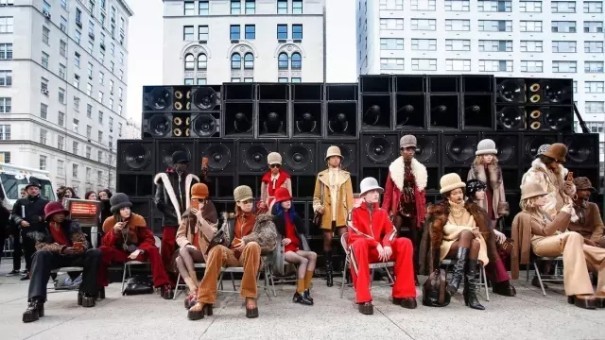The 2017 autumn/winter fashion season is known as "the most diverse model composition season". Is this true?
The T-stage of the 2017 Autumn Winter Fashion Conference is the most diverse so far. However, since the definition of “diversity†has also been extended, do these data really reflect the industry’s current status of selection of colored models?

London, United Kingdom - In the Fall/Winter 2017 fashion season, nearly 28% of all models on the T-stage show in New York, London, Milan, and Paris during the four international fashion weeks were defined as “diversified†models. The fashion spot, The Fashion Spot, has reached its highest point since the two-and-a-half-year model diversity record.
However, while the related results indicate that the overall diversity of ethnicity continues to increase, the definition of the so-called diversity of the model is constantly updated. For Autumn/Winter 2017, the “diversity†defined by The Fashion Spot includes age, size, and gender status. Although all the diversity categories observed by the forum (which all show growth) are indeed worthy of recognition, directly comparing the 2017 autumn and winter seasons with the 2017 spring and summer data can better demonstrate the progress of the industry.
The 2017 Autumn/Winter Fashion Week report observed 7035 models participating in 241 events held in 40 major fashion capitals around the world. The conclusion is that the number of models defined as "diversity" increased by 2.5% to 27.9% at the 2017 Autumn/Winter Series conference held in February this year.
For all models in the season, "XL" models accounted for 0.43%, models aged 50 and over accounted for 0.29%, and transgender models accounted for 0.17%. Totally, the three types of models accounted for 0.89%. But if the stripping out of the broader “diversity†category focused only on race, the number of colored models enabled this season increased by only 1.6%.
The most socially inclusive brands include Chromat, Marc Jacobs, Tome, Christian Siriano, Dolce & Gabbana, Simone Rocha, and J. Crew. These brands have at least 21% of colored, overweight, senior, and transgender models. .
Referring to the updated, more inclusive definition of "diversity" used in the report, Jennifer Davidson, editor-in-chief of The Fashion Spot, said in the New York Times: "We are starting to appeal for more racial diversity. At the same time, the voices for multiple body types are increasing, and the recognition of senior and transgender models does not have too high visibility, but we believe that the emphasis on these types of model castings is very important to ensure that the press conference Models can represent the diversity of people buying fashion."
The background of this survey result announcement is also a challenging time for the industry. The fashion industry has been criticized by bullying, cruel treatment and discrimination against models. It was first selected by an industry-leading model who spoke at the VOICES Forum, the flagship event of BoF Fashion Business Review in December last year. Director James Scully initiated.
However, the report is still exciting and there are indications that model agencies and casting directors are working hard to improve the lack of diversity in the model industry.
“I think this is what impresses me most and makes progress the most: I have seen a visual difference from the past,†said Bethann Hardison, a former model, social activist and founder of Diversity Coalition. “I also felt this vision. This is a different kind of experience. Now, the model agency has no fear of choosing girls of color, no matter what kind of skin color. The girls I say in color are black girls, Asian girls, and Hispanic girls."
“Now they want to be at the cutting edge and hope to find something unusual. They are ready to be closer to reality. This is a very, very good thing,†she continued. “I think this is the most important thing and it’s the most important. battlefield."
Cotton Fabric,Spendex Printed Fabric,Cotton Printed Fabric,Ink Drawing Flower Fabric
Shaoxing City Jiaren Textile Co., ltd. , https://www.jiarentextile.com